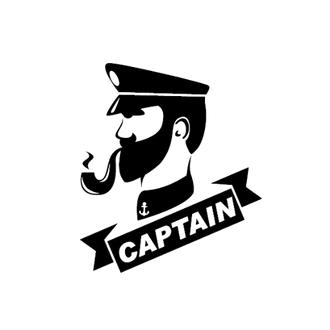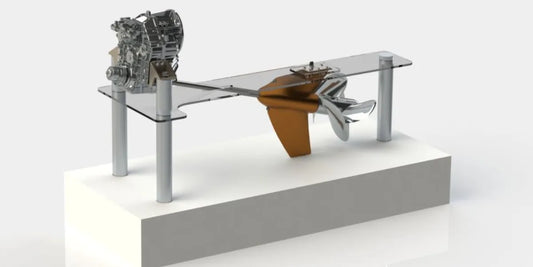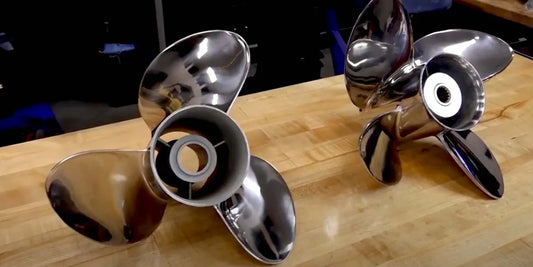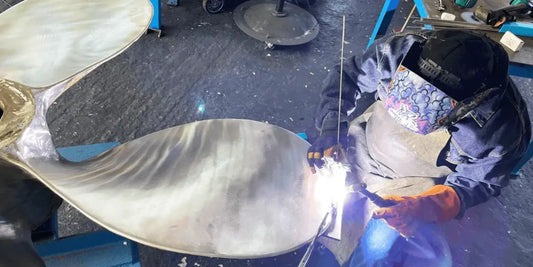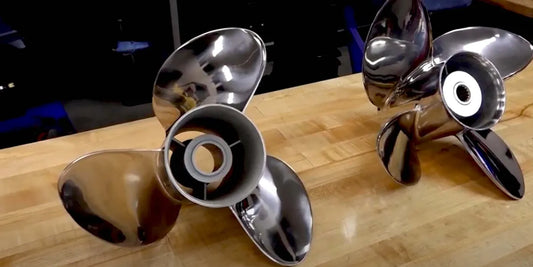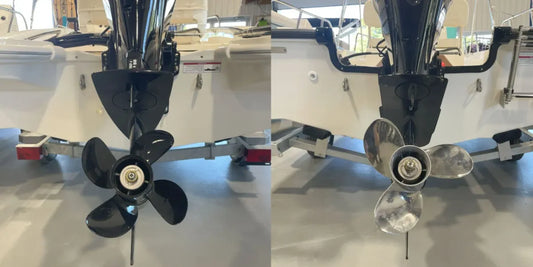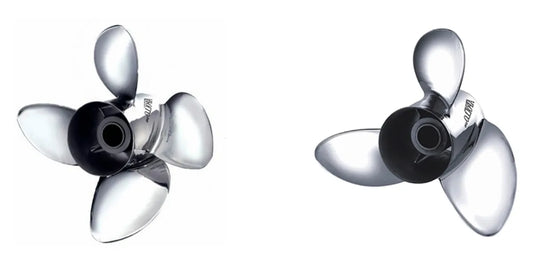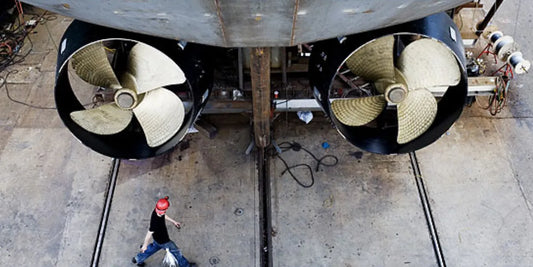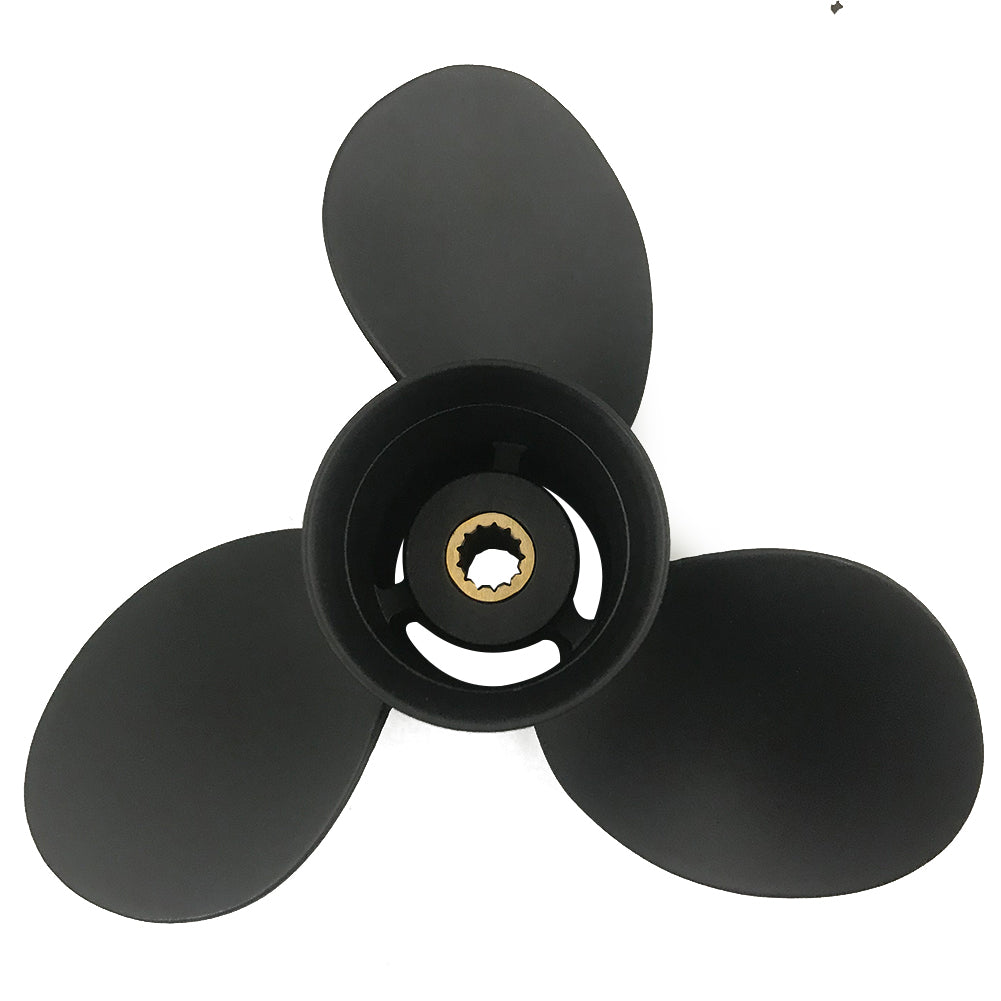In the performance and operational efficiency of modern boats, very important is the selection of the propeller. Among the many considerations, propeller designs —namely, 3-blade versus 4-blade —continue to be one of the most appealing topics for boat buffs, engineers, and manufacturers alike. Both designs, in turn, have advantages and disadvantages that affect speed, fuel economy, mounting stability, and eventual performance on the water. This article delves into the technical aspects of 3-blade versus 4-blade prop designs, analyzing their fundamental distinctions, their typical applications, and the engineering concepts underlying their operation. This examination is meant to create an edge for the critical knowledge that will lead you toward selecting the right kind of propeller for your unique requirements, whether you are a casual boating enthusiast wanting to make that upgrade or a professional in need of all possible knowledge to make an informed decision.
Understanding Propeller Basics

What is a Propeller?
A propeller basically converts rotation into thrust, which moves a vessel or aircraft through air or water mediums. Generally speaking, it is a rotating hub with several blades radially attached thereto, which connects to a power source, such as an engine. Once the propeller blades start to rotate, they push on the medium either forward or backward, creating motion due to pressure changes. This process can be explained by either aerodynamics or hydrodynamics, depending on the environment in which it operates.
Aspects influencing the efficiency of the propeller include the shape of the blades, the size, pitch, and materials. For marine applications, steel, especially stainless steel, and aluminum are commonly employed because of their corrosion resistance and ability to withstand high stresses. Using CFD analysis, modern propeller designs aim to optimize thrust performance while minimizing cavitation and vibration, thereby enhancing efficiency and lifetime.
Types of Propeller: 3-blade vs 4-blade
The primary distinction between 3-blade and 4-blade propellers lies in their performance characteristics and specific use cases, each influenced by hydrodynamic principles. A 3-blade propeller is typically favored for its balance of speed and efficiency. With fewer blades, there is reduced drag, enabling higher top speeds and improved fuel economy. This configuration is generally lighter, making it suitable for applications where achieving optimal speed is a priority, such as in racing boats and certain recreational vessels.
On the contrary, the 4-blade was made for thrust enhancement and stability at low speed. Extra thrust was generated through an increased water-grabbing surface, allowing for good acceleration, smooth operation, and adequate mid-range thrust. Consequently, one can regard 4-blades as suited for heavier craft, operation within choppy waters, or situations demanding precise maneuvering and towing. They also tend to have less vibration and noise, making them very comfortable.
Analyses and empirical tests have shown that four types outperform three-blade types when more torque is needed; however, a trade-off with slightly lower top speed occurs. In brief, it is an operation-specific choice that depends on the boat type and strikes a balance between speed, fuel economy, and load-carrying capacity.
Design Significance of the Blade
The blades' design, along with all other aspects, is crucial to achieving the efficiency, performance, and durability of a propeller. The geometry of blades, in parameters such as pitch, camber, skew, and rake, directly determines the hydrodynamic performance of a propeller. For instance, a higher-pitch blade can serve better in high-speed applications, whereas it optimizes acceleration and thrust at lower speeds with lower-pitch designs. Similarly, a higher degree of camber can serve better in producing an increased lift; on the other hand, too much camber might, under some circumstances, cause cavitation and diminished efficiency.
With further developments in CFD and material sciences, engineers are now able to refine blade designs with precision, ensuring their performance precisely matches the needs of a vessel. It is a proven fact that performance-optimized blade designs result in at least 15% energy saving, but there is also a 20-30% reduction in wear due to cavitation. The further introduction of new materials, such as carbon fiber composites, has enabled the development of blades that are lighter and more corrosion-resistant, thereby enhancing operational life and reducing maintenance requirements.
Keeping these design considerations in mind while utilizing modern analysis techniques makes it possible to combine performance, efficiency, and durability into a propeller design capable of withstanding the rigors of maritime operations.
Performance Comparison: 3-Blade vs 4-Blade

Speed and Efficient Operation of 3-Blade Propellers
For the given application of varied maritime units, 3-blade propellers are designed with speed and efficiency in mind. Aerodynamic design reduces drag, which, when combined with increased rotational speed, enables the vehicle to achieve a higher top speed. Since there are fewer blades, the resistance in water is reduced because less surface area is in contact with the water at any given time, resulting in more efficient propulsion dynamics. This setup is best suited for a vessel where speed is of utmost importance; speedboats and racing yachts would be classic examples.
Performance analysis results suggest that 3-blade propellers in general become more energy-efficient at medium to high RPMs because, hydrodynamically, the loading on them is lower than on other configurations with more blades. The compromise most often lies in getting a little less thrust, so the 3-blade varieties are perfect for lighter boats or for situations where one needs to hurry. These very attributes explain their effectiveness and rates when speed and fuel economy are major considerations.
Stability and Control with 4-Blade Propellers
Being known for their stability and handling among all conditions, 4-blade propellers ensure smoother power delivery and lower vibrations due to the higher number of blades; hence, they remain consistent in performance during low speeds or maneuvers. Fishing boats, cruisers, or any boats that emphasize control and precision in their operations are examples of boats that use such propellers.
Another significant advantage that 4-blade propellers offer is their better cavitation resistance. The larger blade surface minimizes pressure drops by allowing more water to come into contact with the blade, resulting in consistent thrust and reduced cavitation-related losses.
Hydrodynamic performance simulation results confirmed that 4-blade propellers, at low RPMs, develop slightly more thrust than their 3-blade counterparts. This design incurs somewhat higher drag but allows for better control during docking and maneuvering, which is an essential consideration for large or heavily loaded vessels. These characteristics make the 4-blade propeller a more suitable choice for situations where smooth operation and control are more important than power.
Fuel Economy: Which Propeller is More Efficient?
Analysis of fuel economy reveals that the efficiency of 3-blade versus 4-blade propellers is dependent on their respective designs and functions. Due to their reduced drag, 3-blade propellers typically promote speed and allow for efficient cruising. In their design, they minimize fuel consumption, especially for long-distance operation of tow boats at medium, steady speeds. On the contrary, 4-blade ones cause slightly higher drag but provide smoother acceleration and higher thrust at lower RPM, thereby improving thrust-based fuel efficiency at the heavy load and high resistance end of the spectrum, particularly when towing or in rough waters.
According to research and performance testing, three-blade propulsors tend to yield better fuel economy under stable, reasonably predictable conditions, such as recreational boating or regular commercial routes. On the contrary, under more demanding conditions where consistent thrust is of the essence, a 4-blade system may provide better efficiency; the opportunity to use fuel more precisely outweighs any increased drag. Thus, the choice between the two configurations must be made depending on operational requirements, vessel type, and environmental demands expected during operation.
Applications for Different Boats

Selecting the Right Prop for Powerboats
Choosing the right propeller for a powerboat involves a detailed examination of technical parameters related to engine performance, hull design, and operating conditions. Pitch and diameter of the propeller may be considered the most important factors, as these two directly contribute to changes in the maximum speed of the boat, acceleration, and fuel consumption. To illustrate, lower-pitch propellers offer better acceleration and towing power but restrict top-end speed; therefore, they are best suited for more heavy-duty use, such as pulling wakeboarders or heavier loads. Higher-pitch propellers may be used for speed and are thus better suited for light powerboats designed for fast cruising.
The other crucial factor is the materials of the propeller. Aluminum props offer a balance between cost and performance for durability in general recreational applications. Stainless steel imparts better strength and efficiency when used in high-performance environments, such as those frequently operating in shallow waters with a lot of debris. The number of blades also exerts its own influence over the performance. Three-blade props favor higher speeds and agility, while four-blade ones give you more stability and a smoother run at medium and lower speeds, which is mainly preferred for offshore fishing boats or boats running upwind through choppy water.
Evaluation should also extend to cavitation and ventilation, as these two propeller issues could reduce performance if not adequately addressed. Performance charts and engine RPM testing, in accordance with manufacturers' recommendations, can aid in selecting a prop for the powertrain in question. By going through this process, the boat owner and operator can improve vessel efficiency, preserve engine life, and tailor the entire boating experience to the intended application.
Sailing and Performance: What Blade Design Is the Best?
Blade geometry is a crucial element for achieving optimal marine performance, particularly in terms of efficient propulsion, speed, and handling. Although modern propellers are conventionally grouped by the number of blades they have, ranging from two to five, each type is used for its specific operational needs. Two-blade propellers produce relatively less drag and are more often used for light racing sailboats, where speed and drag count are considered more important. In contrast, these may miss out on thrust, particularly under adverse weather conditions or heavy loads.
A three-blade propeller strikes a balance between moderate drag reduction and increased thrust with a smoother operation. It is common on cruising sailboats due to the compromise offered between fuel efficiency and steady propulsion under adverse conditions. In contrast, four-blade configurations aim to reduce thrust and vibration for heavier vessels or applications that demand stability over long-duration traverses. These designs enhance low-speed thrust and are primarily applied in motor sailers or larger yachts.
Another thing affecting blade design is pitch, diameter, and material. A higher pitch is faster and requires a more powerful engine, whereas a propeller with a low pitch imparts a more vigorous thrust at lower engine speeds. Stainless steel propellers, because they do not bend, direct more energy to the propeller, while an aluminum propeller would be lighter yet susceptible to bending under heavy load.
Upon understanding the subtle advantages and disadvantages of blade arrangements and blade technicalities, one can select the most suitable design for a specific application; for example, a technician may choose one for racing sailing or for long-distance cruising. With the development of hydrodynamic modeling and precision manufacturing, performance data have become extremely important to design refinements, meaning that a modern set-up offers a custom balance between power, efficiency, and reliability.
Special Considerations for Racing Boats
Racing boats require that the speed, agility, and durability of the vessel must be in a precise proportion with each other, which must be considered during various design and engineering applications. Hull shapes are optimized for the least amount of drag. They are typically made of lightweight materials, such as carbon fiber or advanced composites, to achieve the best power-to-weight ratio. Rigging systems must be sufficiently adjustable to enable the sailors to trim the sails and rake the masts as the conditions change.
A good keel and rudder must also provide the best hydrodynamic efficiency and course stability. Thin foil profiles and drag resistance are optimized to balance the resistance and additional righting moments of an optimized bulb keel. Furthermore, such innovations are increasingly crucial in high-performance racing boats, as seen in hydrofoils, to drastically minimize wetted surface and allow boats to "fly" above the water.
Instrumentation and data analysis have become a significant competitive advantage in racing. Using high-precision GPS, wind sensors, and performance monitors would provide real-time feedback to inform decisions on the spot, based on accurate data. Putting technology with engineering also puts performance racing boats in a place where every bit of engineering is crucial for gaining an advantage.
Installation and Maintenance of Propellers

How to Fit a Three-Blade Propeller
The installation of three-bladed propellers requires a series of precise steps to maximize both performance and safety. This is a detailed step-by-step guide:
Preparation and Inspection: The cleaning procedure must be followed to make sure that no foreign matter, corrosion, or damage is present on the propeller shaft. It is also essential to inspect the shaft key and keyway for signs of wear, distortion, or other defects. Using a micrometer, measure the diameter of the shaft and verify that it matches the diameter of the propeller hub.
Apply Anti-Seize Compound: Using a quality marine-grade anti-seize compound, apply a thin coating along the propeller shaft. This will help prevent corrosion over time and make removal or adjustment easier. Avoid contaminating the threads with the compound.
Position the Key and Slide the Propeller On: Insert the shaft key into the keyway, ensuring it is fully seated and aligned within. Gently slide the 3-blade propeller onshore along the shaft, ensuring the propeller hub keyway slot aligns with the shaft key. The propeller should go on snugly without undue force.
Install the Washer and Nut: Fit the thrust washer against the back side of the propeller, then secure it with the lock nut. Use a torque wrench to tighten the lock nut to the torque rating specified by the manufacturer. This torque rating is usually found in the manufacturer's documentation. Overtightening can cause damage, but undertightening can prove troublesome during operation.
Securing with a Cotter Pin or Locking Mechanism: If a cotter pin is part of your configuration, insert it through the aligned holes on the castellated nut and shaft, bend the ends of the cotter pin over, and secure them in place. With a locking mechanism, ensure it is properly tightened and engaged according to the specifications.
Final Inspection and Testing: The propeller should be inspected for free rotation without interference or wobbling. Verify alignment correctness: all components must be securely positioned in their respective locations. Conduct a trial at low speed running: performance must be checked and found to be free of vibration or imbalance.
Proper installation of a 3-blade propeller will maximize efficiency and minimize damage to both the propeller and the drivetrain. Consult the manufacturer's recommendations for details specific to your propeller model. Regular maintenance made after installing the propeller will prolong its life and ensure reliable performance.
Maintaining Your 4-Blade Propeller for Longevity
Maintenance of a 4-blade propeller is crucial to ensure optimal operating efficiency, durability, and extended lifespan. Thus, regular inspections should be conducted to detect any signs of corrosion, pitting, or physical distortions that may impact the propeller's functionality. It is also crucial to check the blades for uniform wear, as uneven blade damage may cause imbalance, leading to vibration and potential stress on the drivetrain.
It should be thoroughly cleaned to remove all traces of marine vegetation, salt deposits, or debris that may have accumulated during its operation, mainly when operating in a saltwater environment. Non-corrosive cleaning agents should be used, provided that they do not react adversely with the material of the propeller or damage its surface. The lubrication of the propeller shaft should be maintained; plus, the torque specification of the nut should be checked now and then to ensure proper fastening of the propeller.
Troubleshoot alignment at regular intervals to ensure that the propeller tip is truly in line with the shaft and engine, as any misalignment may render the system inefficient and impose unnecessary strain on the mechanical components. Along with these maintenance practices, maintain a schedule to ensure the propeller's life is extended, while also providing better fuel efficiency and vessel performance. Detailed maintenance guidelines must be followed according to the manufacturer's instructions for your specific type of propeller.
Signs of Wear: When to Replace Your Prop
Any wear signs on your propeller must be noted to ensure vessel performance under desirable conditions and to avoid further mechanical damage. Key indicators include cracks or chips on the blades and any distortion thereof, which can reduce hydrodynamic efficiency and lead to vibrations or imbalances in actual working conditions. Another major factor is corrosion, in which case saltwater prevents the corrosion from developing; aluminum or stainless-steel props are attacked over time. Then there are cavitation burns to look out for, which occur as pits or erosions on the blade surface due to vapor bubbles collapsing against the metal.
A decrease in fuel efficiency or a lagging feel at RPMs sometimes denotes the Propeller's inability to transfer power efficiently. Propellers must be removed if they have suffered significant damage or severe wear that cannot be repaired, as this will cause the engine to bear an unnecessary load that could lead to failure. Regular checking of logic and immediate replacement of worn-out props ensure the safety, reliability, and performance of your vessel. Always consult the specifications of your propeller model and operational requirements for correct bearing replacements.
Cost Considerations: 3-Blade vs 4-Blade

Initial Investment: Difference in Price
The price differences between 3-blade and 4-blade propellers are many, and one should give due consideration to which one should give due consideration to which one. From my perspective, 3-blade propellers are typically sold at a lower initial cost than 4-blade propellers. Such price discrimination generally is due to the complex manufacturing processes and materials used, as 4-blade types require additional balancing and precise engineering to ensure they meet top performance standards. For instance, consider that cost is paramount; three blades might be more pocket-friendly in the majority of applications.
The higher initial cost of 4-blade propellers is often justified by the extended benefits that make the investment worthwhile. That means smoother acceleration and better grip in rough waters or even when stability is an issue. When weighing upfront costs against added capability, I often find that my needs —such as vessel size, usage, or desired performance—outweigh the price. Truly, pay-offs in the choice of the right propeller will build reliability and drive costs down the road.
Ultimately, that initial price consideration has to be weighed, on the one hand, against actual affordability and, on the other, against the practical output of the propeller and how that affects fuel consumption. Based on price alone, I might lean toward the three-blade propeller; however, the performance benefits of a four-blade propeller, particularly in cases where stability and speed control are paramount, might very well justify its cost. A discussion with a knowledgeable marine expert would be constructive, along with a thorough examination of how I intend to operate my boat, to ensure that a combination of factors leads to an informed decision.
Long-Term Costs: Maintenance and Replacement
Several critical factors appear to come into play when considering the long-term costs of propeller maintenance and replacement. First and foremost would be the very material of the propeller in question, for that alone could dictate durability and maintenance issues. Aluminum propellers, the cheaper alternatives, are prone to damage from impacts and wear and tear and should thus be subjected to almost constant checks for the slightest of damages and early replacement, if necessary. Stainless steel propellers, in theory, should be impervious to corrosion and physical damage unless, of course, severe damage was caused during the installation phase. Working against stainless steel propellers is their high cost, which means they require a significant upfront investment. In comparison to an aluminum unit that requires fairly frequent repairs and replacements, the stainless steel unit would, over time, reduce operational costs, making it a better value in my opinion.
Secondly, good maintenance practices are crucial for both performance and the propeller's lifespan. Typically, I schedule periodic inspections based on blade deformation, corrosion, and imbalance, ensuring that my selected propeller will continuously operate properly. Knowledge of working conditions my boat usually encounters can aid me in anticipating wear, including exposure to debris, shallow water, or saltwater conditions. This would give me some options, either a protective coating or avoiding hazards. The cost assessment will also include professional servicing costs or training myself in the basics of maintenance.
Ultimately, the correct choice must negotiate a fine attrition of preliminary material investment, anticipated maintenance frequency, and the efficiency capability required by my specific application and boat. By focusing all attention on long-term cost considerations, I am confident that I will select a solution that consistently performs well while also being an option that will not incur unexpected expenses over time.
Value for Money: Which Propeller is Worth It?
When considering which propeller offers the best value for money, my mind usually drifts to a combination of durability, power efficiency, and long-term operational costs. Stainless steel propellers, while costing more upfront than those made of aluminum, often justify their price through greater strength and resistance to wear in harsh environments. They cannot be replaced too soon due to their exceptional durability, which serves to keep them working very well in high-performance or frequent-use applications, making them very cost-effective in the long run. On the other hand, aluminum propellers are less costly and work in less severe conditions, but they can get crushed under stress.
Another critical factor affecting the value for money is the propeller's performance characteristics relative to my specific boating requirements. Stainless steel propellers are more precise and, therefore, more efficient due to their stiff design, which provides better fuel economy and handling. If one is looking to exploit this added performance for actual cost efficiency gained over the life of the propeller in operations or for increased speed, then it serves the best. Aluminum propellers, on the other hand, might be better choices in cases where speed and precision are of secondary concern, as in the case of weekend or recreational uses.
Ultimately, the propeller that is "worth it" is largely dependent on my own needs and constraints. Consideration of both short-term and long-term costs, as well as expected performance advantages, is part of a cost-benefit analysis that informs an informed decision. On applications where requisites are at the higher end, stainless steel would be an alternative choice worthy of investment from a long-term perspective, whereas in cases where load is on the lighter side, aluminum will be just suitable and also a bit cheaper. Taking all these factors into consideration really equips me to select a propeller that aligns with both operational needs and financial goals.
Reference Sources
- 3 Blade vs. 4 Blade Propeller - Michigan Wheel
- 3 or 4 Blade Prop: Which is Better for Planing Faster? - Reddit Boating
- 4 Blade Prop Versus 3 Blade - Bennington Marine Forum
- 3 Blade Propeller vs 4 Blade Propeller - Boat Design Forum
- What's the Difference Between 2, 3, and 4-Bladed Propellers? - Airplane Academy
Frequently Asked Questions (FAQs)
What benefits can a 3-blade propeller give?
Compared with a 4-blade propeller, a 3-blade prop generally achieves better top speed and less drag. This means that a three-blade propeller is ideal for accelerating the boat to its top speed at wide-open throttle (WOT) and remains an efficient choice while cruising. Furthermore, by allowing for increased efficiency while cruising at low RPMs, 3-blade props can also improve fuel mileage. For most boaters, 3-blade props are preferred due to their balanced nature between performance and fuel efficiency. However, they are not suitable for holeshot acceleration.
And: How good is a 4-blade prop at low speeds?
This might be a deep question to ponder upon: at very low speeds, does a 3-blade prop pull better?
In performance at low speeds, a 3-blade is very good, yet does not pull as much as a 4-blade. The fewer blades of a 3-blade mean less surface area to grasp the water, and this means slow acceleration as compared to the 4-blade. But if it's all about speed and fuel efficiency at cruising RPMs, then a 3-blade should be preferred. Your choice between a 3-blade and a 4-blade must consider the very needs of your boat and its use.
What steps are taken to compare the diametrosity of the propellers between 3- and 4-blade designs?
The diameter of a propeller determines the performance of both the 3-blade and 4-blade varieties. The greater the diameter, the more thrust and efficiency will be produced, especially at lower speeds. Conversely, having a smaller diameter allows for achieving a higher top-end speed. There does need to be a balance between the diameter and the number of blades in the consideration of 3- and 4-blade propellers. Torque and acceleration can be better with a larger diameter 4-blade prop, where high speed can be best with the smaller diameter 3-blade prop. Finally, select your prop according to the performance you wish for in your boat.
How best to choose a prop for my boat?
Again, when determining what best suits your boat, consider the type of boating you do, the hull design of your vessel, and the specifications of your engine. Initially, one must determine whether top speed or hole shot really matters; this consideration may be important when choosing between a 3-blade and 4-blade propeller. Next, determine if your engine can reach the recommended maximum RPM and select the best propeller for it. Consideration should also be given to trying different propeller configurations, as not all boats will respond the same to variations in blade count or design. Supply fuel economy should also be considered because a suitable prop can pay dividends in the form of higher total mileage.
What are the fuel mileage differences between the 3-bladed and 4-bladed props?
Fuel mileage may vary significantly between one 3-bladed prop and another 4-bladed prop due to differences in their design. A 3-bladed propeller typically offers better fuel economy at high speeds because it produces less drag than a 4-bladed propeller. However, at low speeds, a 4-blade prop could be more fuel-efficient by maintaining a low engine RPM yet producing good performance. In any case, use your normal operating conditions and activities as a basis for prop choice; for instance, if you cruise most of the time at speed, the 3-bladed prop might pay off better, and if you are active on slow-speed cruising, the 4-bladed prop could be a better idea. Always consider your proposition in terms of fuel efficiency.
